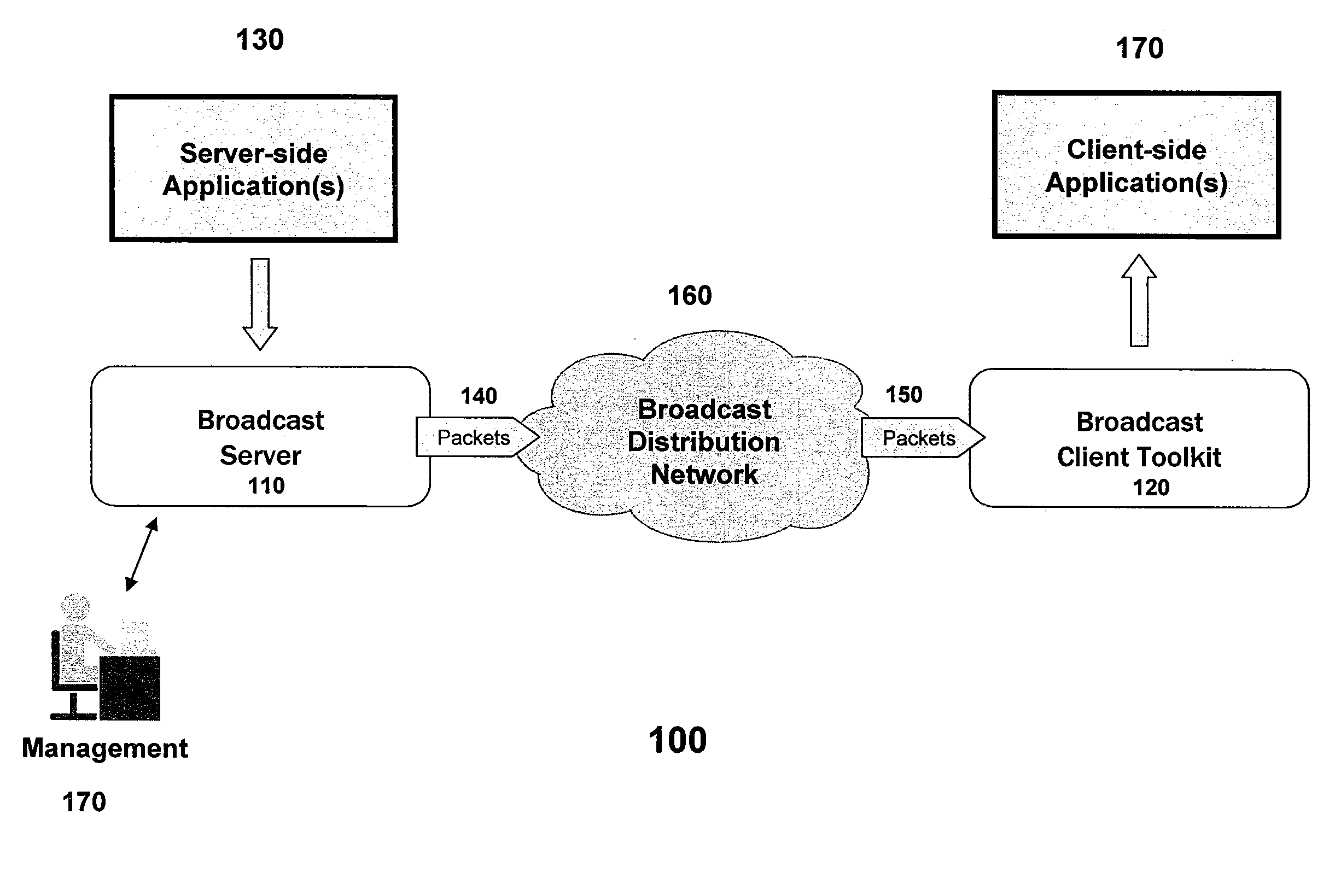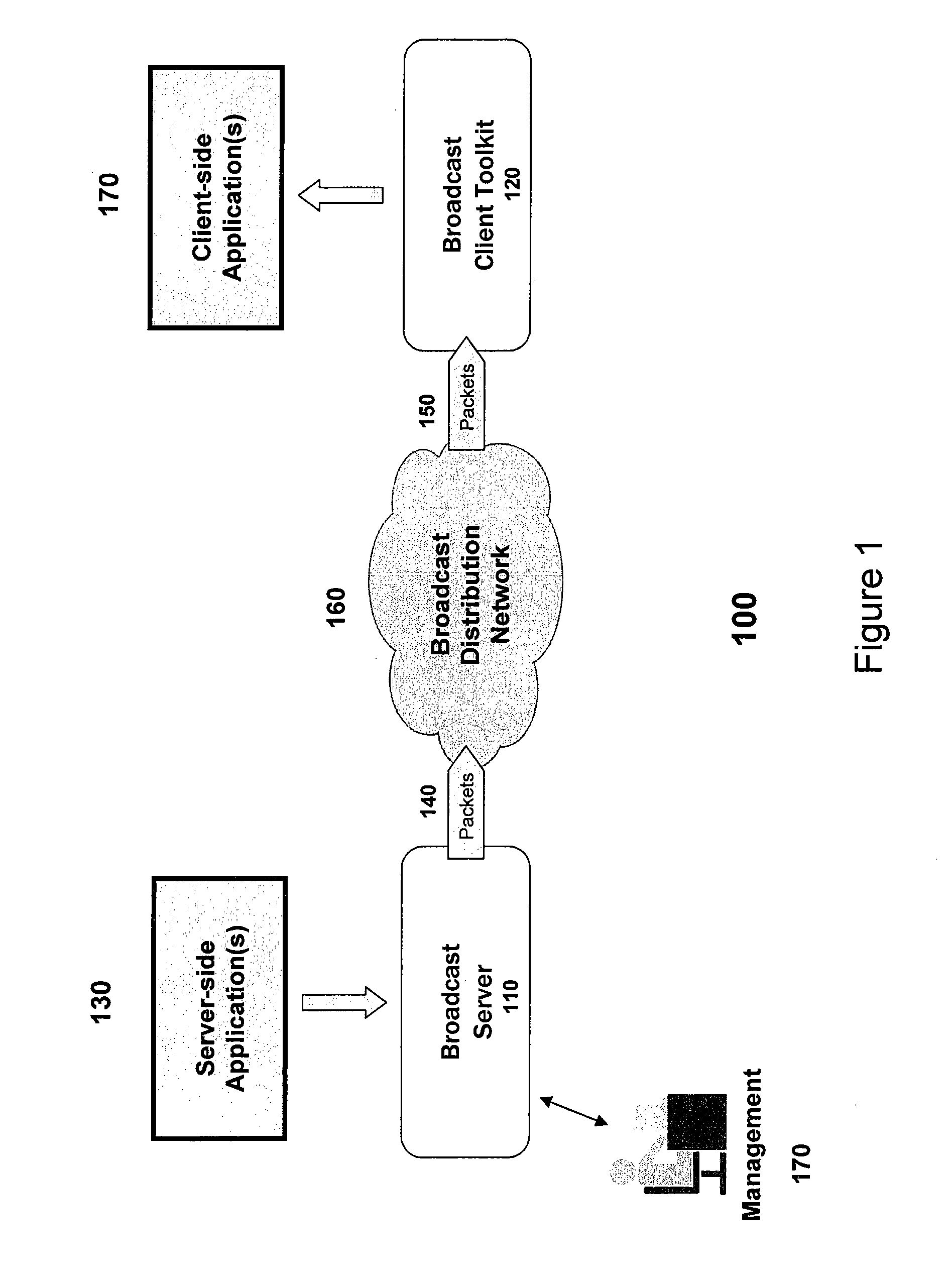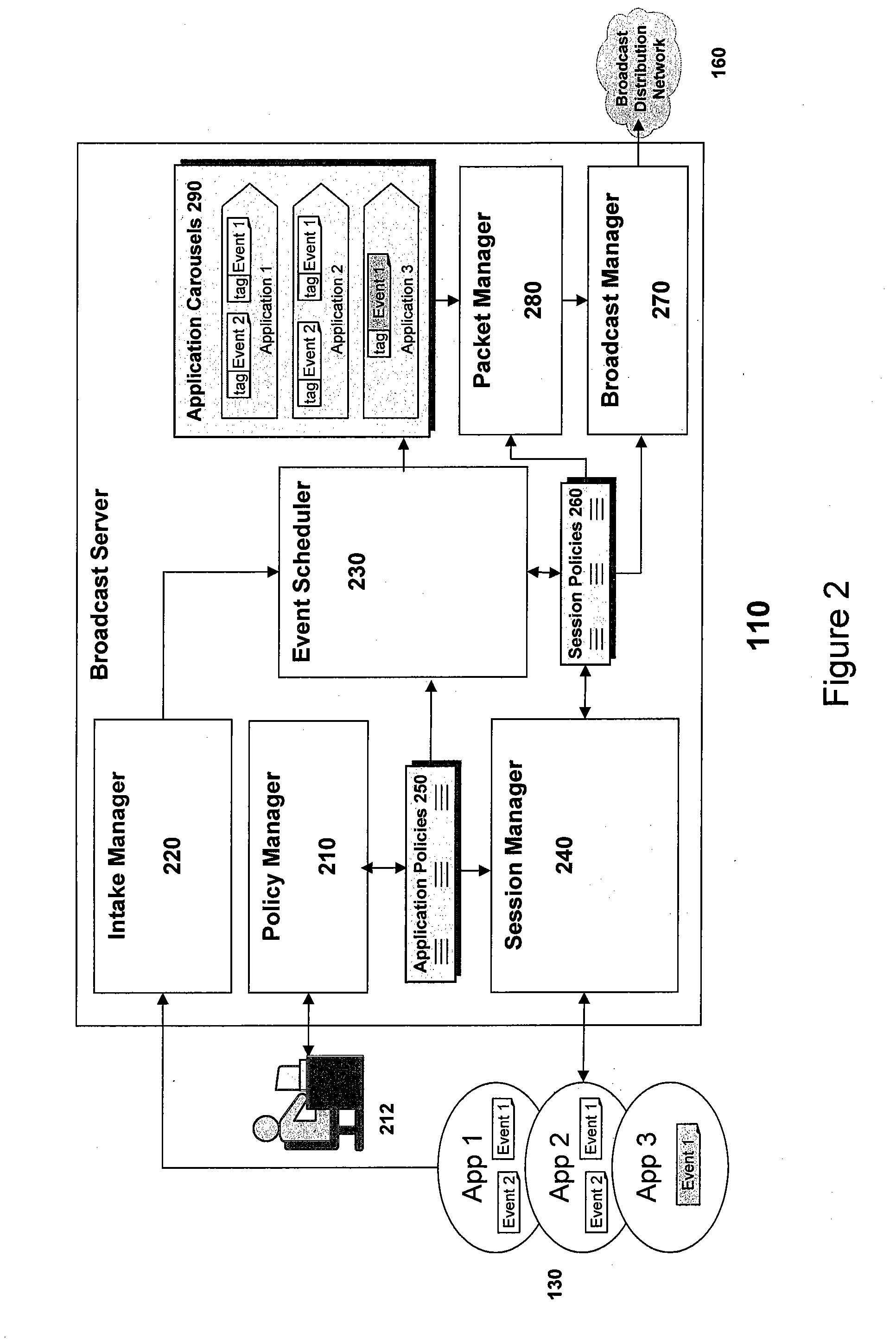In general, the present invention is most applicable to
client devices where there is a broadcast mechanism or other efficient data distribution mechanism in one direction (network to many devices), but there is not an efficient / cost-effective or available two-way mechanism to pull data customized for each device.
For example, a situation in which a
mobile device must communicate with a central
data store or
server over a
wireless network may introduce bandwidth constraints, latency concerns, intermittent
connectivity problems, and prohibitive cost into any system designed to transfer data and content to a user of a
client device.
In addition, the lower available bandwidth as compared to a high-speed wire line network may place constraints on the type or complexity of the data or content that can be effectively delivered.
Also, mobile networks typically can not
handle a large number of simultaneous client-initiated
unicast (i.e., individually addressed
server to client communications) transactions without severe adverse
impact on other network traffic.
Similarly, latency and intermittent
connectivity concerns may
impact the ability of the client device to communicate with a source of data or content to confirm delivery of content.
In addition, mobile and other specialized devices typically have characteristics that impose constraints on the storage and
processing of data that are not present when using desktop computers or other devices connected to a high speed bidirectional network.
As a result, a threshold issue in determining how best to deliver data to a device is that of the mode of data transfer used for communications between intended recipients and the network infrastructure.
Another
disadvantage of point-to-point communications is that the cost in terms of network resources and overhead is proportional to the number of client devices receiving the transmission, so that costs generally scale directly with the number of recipients.
In addition, in situations of intermittent or unreliable coverage, the time and network resources required for
processing a request-response interaction may not be available when needed.
In addition,
data processing resources such as those required to receive and process client requests can become a significant burden on a network if a large number of client devices are sending requests or data to a central
server within a relatively small timeframe.
Because bandwidth is a limited resource, it needs to be efficiently allocated between multiple users and between
multiple applications that utilize that bandwidth to provide data services to those users.
For example, dedicating bandwidth to non-
streaming data applications (i.e., those other than streaming audio or video, for example) is not an efficient way to allocate such a resource.
This is because such applications do not fully utilize the allotted bandwidth over an extended period of time.
They are often idle, and when requiring bandwidth may need to send data in a burst.
Thus, the traditional method of dedicating a broadcast channel to such an application is inefficient when it comes to fully utilizing the limited bandwidth available in the network.
However, implementing a shared bandwidth model presents significant challenges.
For example,
multiple applications may need to transmit data at the same time, or may not be able to be constrained to the bandwidth limitations assigned to them.
This may cause an attempt to use more network bandwidth resource than is physically available to the system because applications do not know how other applications are using the same network resources, and if they do, can not reasonably know about the usage patterns of the other applications during a broadcast session (where the usage patterns may introduce demands on bandwidth that exceed the amount allocated).
However, it is not an optimal solution as data with a
lower priority may never be sent or may be delayed sufficiently to render its delivery ineffective.
This approach is also somewhat inflexible, since once packets are tagged with a priority indication, the relative priority cannot be changed (and hence the relative delivery order cannot be altered).
 Login to View More
Login to View More  Login to View More
Login to View More 


